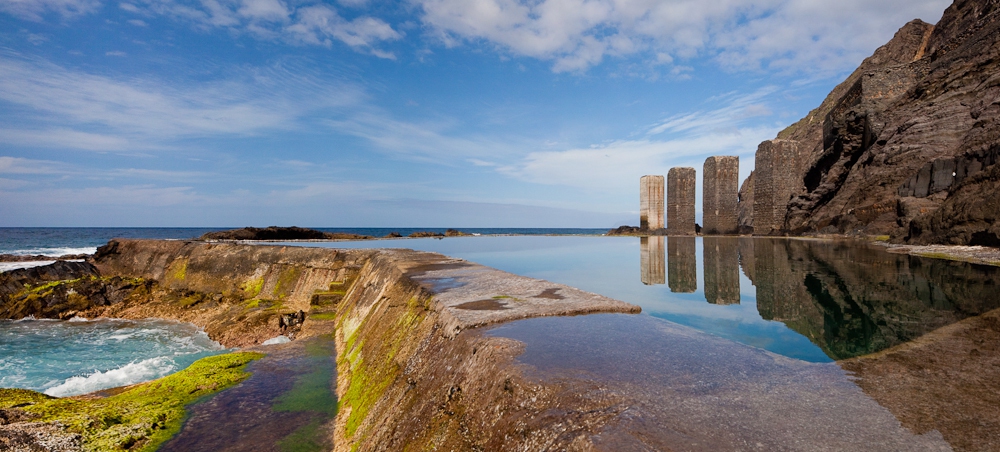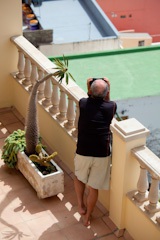Piscina Natural de Hermigua, the natural swimming pool at Hermigua, is one of our favourite and one of our most visited spots on La Gomera. The natural sea water pool is not only wonderful for a refreshing swim on a hot day, but is also set amongst the most spectecular scenery. The pool is flanked by steep cliffs on the South, impressive pillars that are reminicent of the island’s banana era to the East, grande waves crashing against the rocks to the North and stunning views to Playa Hermigua, cliffs at Santa Catalina and picturesque Agulo to the West.
These images hopefully give you an appreciation of the pool and it’s location, although they do not fully convey the scale and sheer wildness of the place. My next blog entry will be showing the views to the West, a typical Gomeran view of towering cliffs with hamlets and cultivated terrace clinging to them.
The towers are a leftover from the early twenty century when the banana trade on La Gomera was flourishing. Metal constructions on top of the cranes enabled the loading of bananas onto cargo ships anchored in the deep waters out in sea, safe from the treaterous rocks.
For anyone going to La Gomera, this is a must visit spot. One word of caution though. With high winds and/or rough seas, the pool and adjacent area is a no go zone. I will pursue a future blog entry showing the rough side of the sea from previous visits.

